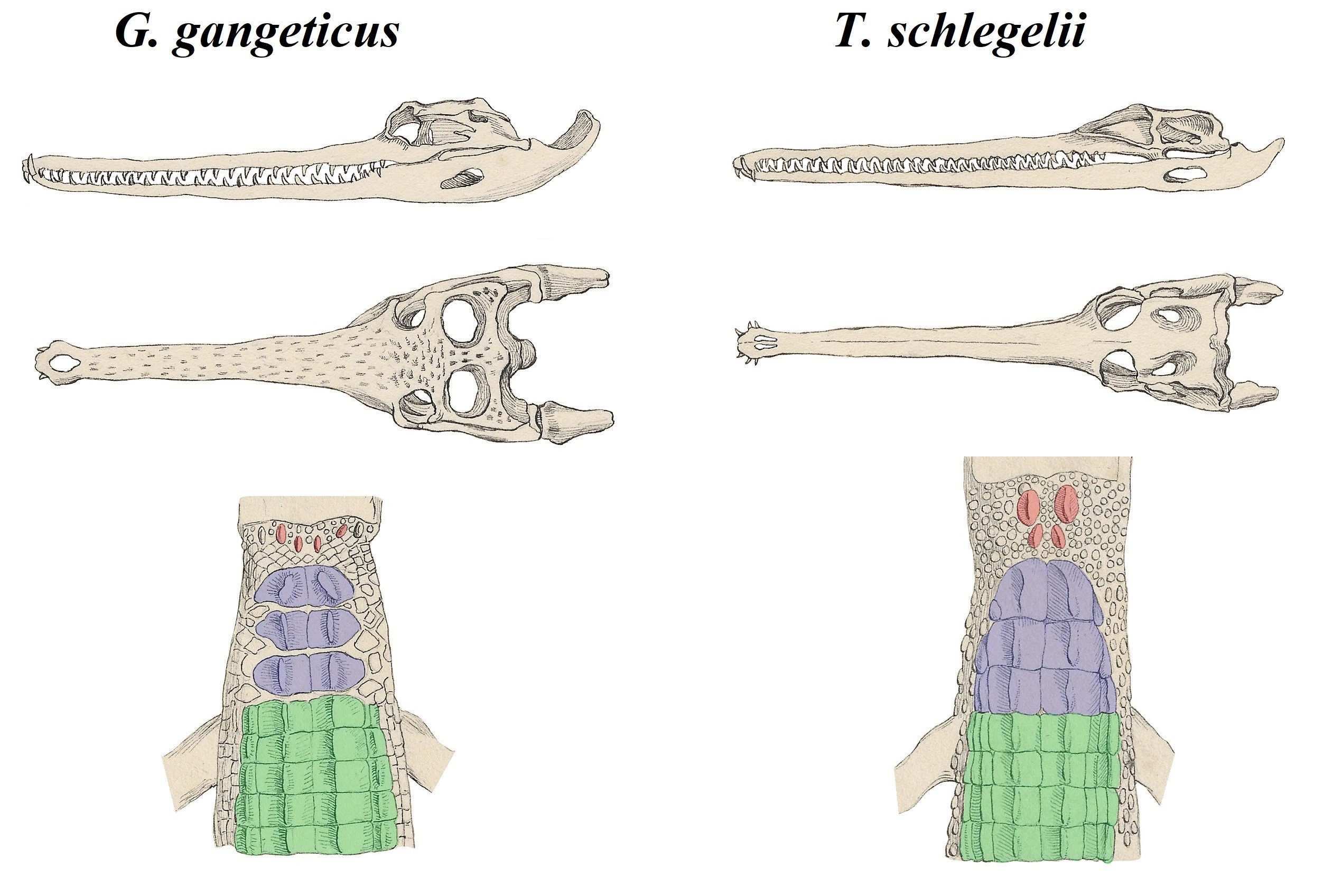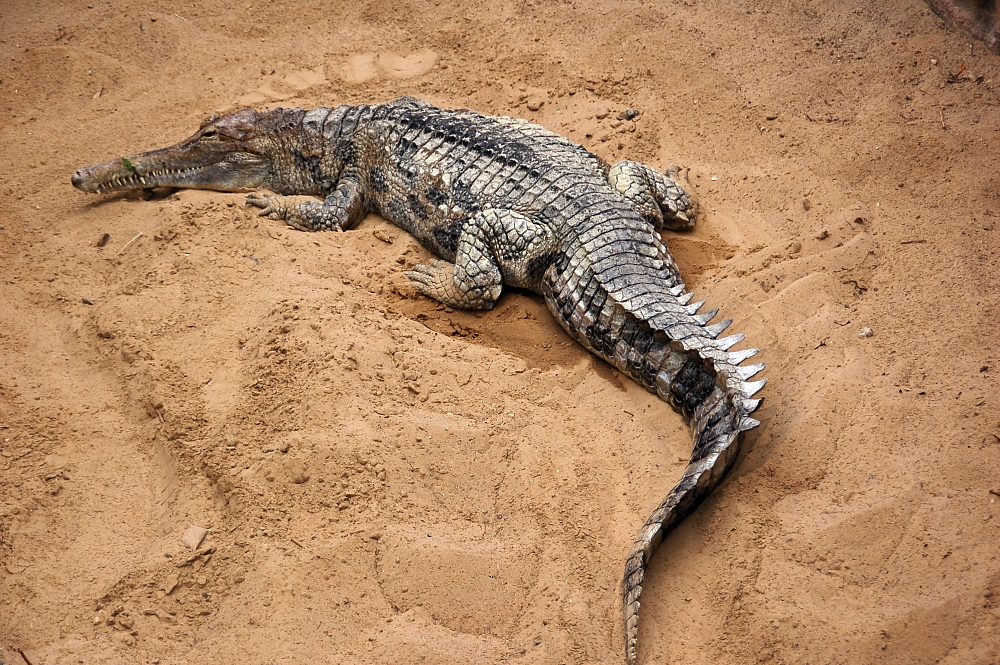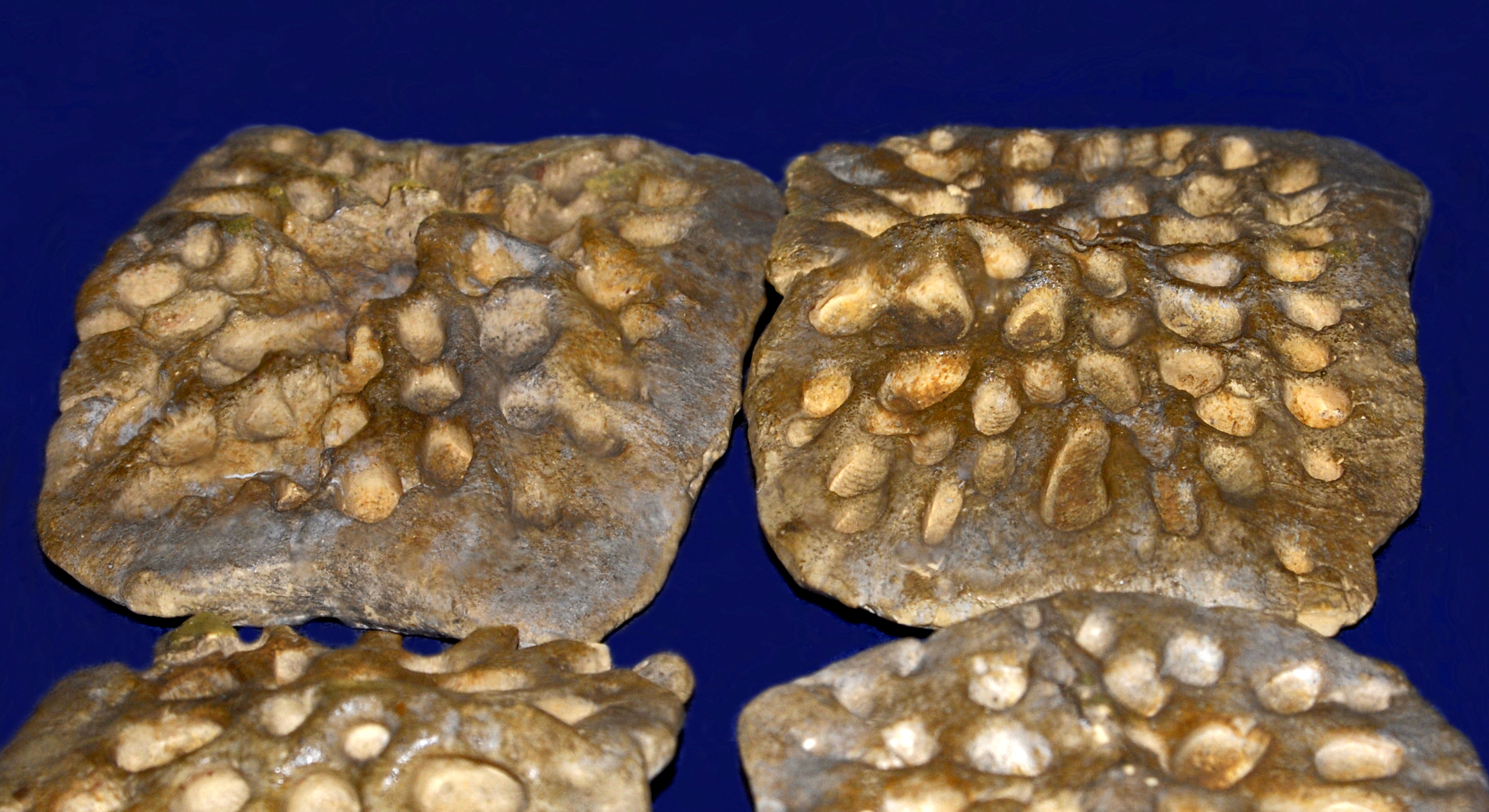말레이가비알
"오늘의AI위키"의 AI를 통해 더욱 풍부하고 폭넓은 지식 경험을 누리세요.
1. 개요
말레이가비알(Tomistoma schlegelii)은 가비알과에 속하는 악어의 일종이다. 말레이반도, 보르네오, 수마트라가 원산지이나, 싱가포르, 태국, 베트남에서는 멸종되었다. 멸종된 종을 포함할 수 있는 토미스토마 속(Tomistoma)에 속하며, 주둥이가 가늘고 긴 형태적 특징을 가진다. 주로 이탄 습지, 저지대 습지림, 강, 호수에 서식하며, 물고기, 작은 척추동물 외에도 원숭이, 사슴, 물새 등 다양한 동물을 먹는 광식성 식성을 가진다. 서식지 감소, 사냥, 알 채취 등으로 개체 수가 감소하여 CITES 부속서 I에 등재되어 국제적으로 보호받고 있다. 인간을 공격하는 경우가 드물지만, 서식지 감소와 먹이 부족으로 인해 인간과의 충돌이 증가하고 있다.
더 읽어볼만한 페이지
- 1838년 기재된 파충류 - 일본장지뱀
일본 고유종인 일본장지뱀은 일본 열도 전역에 분포하며 짙은 갈색 또는 회색 몸통에 검은색 줄무늬가 있고 곤충 등을 먹으며 자절을 통해 포식자로부터 도망치는 특징을 가진다. - 가비알과 - 피스코가비알리스
피스코가비알리스는 마이오세와 플리오세 시대 남아메리카에 살았던 멸종된 가비알류 악어로, 길고 넓적한 주둥이와 날카로운 이빨을 가졌으며, 페루 피스코 형성 지층에서 발견된 화석을 통해 당시 생태계 최상위 포식자였음을 알 수 있으나 환경 변화로 멸종되었다. - 가비알과 - 람포수쿠스
람포수쿠스는 마이오세에 인도와 파키스탄에 살았던 거대한 악어로, 길고 좁은 주둥이와 날카로운 이빨을 가진 육식성 포식자이며, 과거 토미스토마아과로 분류되었으나 현재는 인도거가비알아과로 분류된다. - 말레이시아의 파충류 - 바다거북
푸른바다거북은 전 세계 열대 및 아열대 해양에 서식하며, 어린 개체는 육식, 성체는 초식으로 잘피밭 등 얕은 연안 해역을 주요 서식지로 삼지만, 남획으로 멸종 위기에 처해 국제적인 보호를 받고 있으며 불법 포획, 혼획, 서식지 파괴, 해양 오염 등의 위협이 여전히 존재한다. - 말레이시아의 파충류 - 물왕도마뱀
물왕도마뱀은 동남아시아에 널리 분포하며 반수생 생활을 하는 왕도마뱀과에 속하는 파충류의 일종으로, 서식지 파괴와 남획으로 위협받아 IUCN 적색 목록에서 관심 대상으로 분류된다.
2. 분류 및 계통
말레이가비알은 말레이반도, 보르네오섬, 수마트라섬이 원산지이지만, 싱가포르, 베트남, 태국에서는 지역적으로 멸종되었다.[2]
말레이가비알은 짙은 적갈색 또는 검은색을 띠며, 등과 꼬리에 검은 반점이나 가로 줄무늬가 있다. 배 쪽은 회백색이며, 옆면에 어두운 얼룩무늬가 있다. 어린 말레이가비알은 턱, 몸, 꼬리 측면에 검은색 얼룩무늬가 있다.[62]
과거 말레이가비알은 물고기와 아주 작은 척추동물만 먹는 것으로 알려졌으나, 최근 연구에 따르면 좁은 주둥이에도 불구하고 다양한 먹이를 먹는 잡식성 동물이다. 물고기와 작은 수생동물 외에도 코주부원숭이, 필리핀원숭이, 사슴, 물새, 파충류 등 더 큰 척추동물도 잡아먹는다.[72] 동칼리만탄주에서는 말레이가비알이 소를 공격했다는 보고도 있다.[70]
학명 ''Crocodilus (Gavialis) schlegelii''는 1838년 살로몬 뮐러가 보르네오에서 수집한 표본을 묘사하면서 제안했다.[12] 1846년, 그는 이 종을 별도의 속으로 분류해야 할 경우 ''Tomistoma schlegelii''라는 이름을 사용할 것을 제안했다.[13] 종소명 ''schlegelii''는 헤르만 슐레겔의 이름을 딴 것이다.
말레이가비알은 주둥이가 넓은 형태로 인도 가비알보다 크로커다일과와 형태학적으로 유사하지만, DNA 염기 서열 분석을 이용한 분자 연구 결과 가비알과에 속하는 것으로 밝혀졌다.[15][16][17][18][19][20][21][22]
속 ''말레이가비알속''(Tomistoma)에는 ''T. cairense'', ''T. lusitanicum'', ''T. taiwanicus'', ''T. coppensi''와 같은 여러 멸종된 종들이 포함될 수 있다. 그러나 이러한 종들은 계통 발생 연구에서 분기도를 보인다는 증거가 있기 때문에 다른 속으로 재분류되어야 할 수 있다.[21][14]
멸종된 ''Tomistoma'' 종의 화석은 고생대, 신생대, 제4기 퇴적층에서 타이완, 우간다, 이탈리아, 포르투갈, 이집트 및 인도에서 발견되었지만, 거의 모든 종들이 말레이가비알보다 더 오래된 시기에 존재했기 때문에 다른 속에 속할 가능성이 높다.[23]
아래의 주요 현존하는 악어 그룹의 분기도는 분자 연구에 기초하며, 말레이가비알의 밀접한 관계를 보여준다.[16][19][20][21][22]
다음 분기도는 가비알과 내에서 말레이가비알의 위치를 보여준다. 이는 형태학, DNA 염기 서열 분석 및 층서학 데이터를 분석한 팁 데이팅 연구를 기반으로 한다.[21]
3. 분포 및 서식지
이들은 주로 이탄 습지나 저지대 습지림[46], 하천이나 호수 등지에 서식한다.[47] 1950년대 이전에는 바리산산맥 동쪽의 수마트라섬 전역에 걸친 담수 생태계에 서식했다. 현재 수마트라섬 동부에서는 사냥, 벌채, 화재, 농업의 영향으로 분포 구역이 30~40% 감소했다.[48] 2010년 시점의 성체 개체수는 2,500마리 미만으로 추정된다.[46]
4. 형태
매끄럽고 장식이 없는 주둥이는 매우 길고 가늘며, 길이는 밑면 너비의 3.0~3.5배이다. 모든 이빨은 길고 바늘처럼 생겼으며, 턱 안쪽에서 서로 맞물려 있다.[62] 등쪽 비늘은 가운데가 넓고 몸의 옆으로 뻗어 있으며, 발가락은 밑부분에 물갈퀴가 있다. 머리와 몸의 비늘에는 감각 기관이 있다.[62]
말레이가비알은 현존하는 악어 중 가장 가늘고 긴 주둥이를 가지고 있는데, 긴코악어나 오스트레일리아악어와 비슷하며, 가비알의 주둥이만이 눈에 띄게 더 가늘다.[63] 수컷은 최대 5m까지 자랄 수 있으며, 몸무게는 최대 600kg까지 나갈 수 있다.[66][67] 암컷은 최대 4m까지 자랄 수 있다.[65]
말레이가비알은 긴 주둥이 때문에 현존하는 악어 중 가장 큰 두개골을 가지고 있는 것으로 보인다. 전 세계 박물관에서 발견된 현존하는 종의 가장 긴 악어 두개골 8개 중 6개가 말레이가비알의 것이었다. 현존하는 종의 가장 긴 악어 두개골은 이 종의 것이었고, 하악 길이는 104cm였으며, 길이는 84cm였다.[68]
길이가 2.9m에서 4.05m이고 무게가 79kg에서 255kg인 세 마리의 개체는 1704N의 물리력을 보였다.[69]
5. 생태
말레이가비알은 오리노코악어나 아메리카악어처럼 코가 가늘지만 넓은 식단을 가진 신열대구 악어와 생태학적으로 비슷하다.[63]
암컷은 둑 모양의 둥지를 만들고 한 번에 13~35개의 알을 낳는데, 이는 현존하는 악어 중 가장 큰 알이다. 암컷은 약 2.5m에서 3m 정도의 크기에서 성적으로 성숙해지는데, 이는 다른 악어에 비해 큰 편이다.[71]
야생에서 언제 번식하고 둥지를 트는지는 알려져 있지 않다. 알을 낳고 둥지를 만든 후 암컷은 둥지를 떠난다. 다른 악어와 달리 새끼는 부모의 보살핌을 받지 못하고 몽구스, 호랑이, 표범, 승냥이 등 포식자에게 잡아먹힐 위험에 처한다. 새끼는 부화 후 약 90일 동안 스스로 먹이를 찾는다.
5. 1. 인간과의 관계
말레이가비알은 사람을 공격하는 경우가 드물지만, 서식지 감소와 먹이 부족으로 인해 인간과의 충돌이 증가하고 있다. 2008년 칼리만탄 중심부에서 4m 크기의 암컷 말레이가비알이 어부를 공격하여 잡아먹은 사건이 발생했는데, 이는 말레이가비알에 의한 인간의 치명적인 공격으로 입증된 최초의 사례였다.[72][26][57] 2012년까지 최소 두 건 이상의 치명적인 공격이 추가로 발생하여, 인간과 말레이가비알의 갈등 증가가 서식지, 서식지의 질, 그리고 자연적인 먹이의 수 감소와 관련이 있을지도 모른다는 것을 보여주었다.[73][27][58] 2019년까지 최소 10건의 피해가 발생했다.[32]
습지 감소와 팜유 플랜테이션으로의 전환으로 인한 서식지 상실 위협을 받고 있다.[31] 가죽이나 고기를 얻기 위해 사냥하며, 알은 인간의 식용으로 채취되는 경우도 많다.[57] 2000년대 중반에 실시된 개체군 조사에서 개체의 분포가 불균일하고 단편적이며 유전적 격리가 있다는 것이 나타났다.[59] 보호되지 않은 지역의 개체군 중에는 번식이 불가능한 개체도 있다.[60]
CITES 부속서 I에 등재되어 있다.[31] 말레이시아 정부와 인도네시아 정부는 야생 멸종을 막기 위한 조치를 취하고 있다. 인도네시아에서는 개체수가 회복되고 있다는 보고도 있지만, 이 미미한 회복으로 인해 지역 주민들 사이에서는 습격에 대한 우려가 있다.[57]
6. 위협 및 보존
말레이가비알은 담수 늪의 배수로 인한 서식지 감소와 상업적인 야자유 농장으로의 전환으로 인해 대부분의 지역에서 서식지가 줄어들고 있다. 또한 가죽과 고기를 얻기 위해 사냥되며, 알은 종종 인간의 식용으로 채취된다.[72] 2000년대 중반에 실시된 인구 조사에 따르면 개체 분포가 얼룩덜룩하고 단절되어 있어 유전적 고립의 위험이 있는 것으로 나타났다.[74] 보호되지 않은 지역의 일부 개체군에는 생존 가능한 번식 개체가 없다.[75]
말레이가비알은 CITES 부속서 I에 등재되어 국제적으로 보호받고 있다.[61]
말레이시아와 인도네시아 정부는 야생에서 멸종되는 것을 막기 위한 조치를 취하고 있다. 인도네시아에서는 일부 개체 수가 회복되고 있다는 보고도 있지만, 이러한 소폭의 회복과 함께 지역 주민들 사이에서는 공격에 대한 근거 없는 두려움이 나타나고 있다.[72] 2008년, 칼리만탄에서 길이가 4m인 암컷 말레이가비알이 어부를 습격하여 잡아먹은 사건이 발생했으며, 이는 말레이가비알에 의한 인간 포식 사례로 처음 확인되었다.[57] 2012년까지 최소 2건의 인명 피해가 확인되었고, 인간과 말레이가비알의 충돌이 증가하고 있는데, 이는 서식지나 먹이 감소에 의한 것일 수 있다.[58] 2019년까지 최소 10건의 피해가 발생했다.[32]
참조
[1]
논문
Phylogenetic analysis of a new morphological dataset elucidates the evolutionary history of Crocodylia and resolves the long-standing gharial problem
2021
[2]
간행물
Tomistoma schlegelii
2023
[3]
논문
Waarnemingen over de Indische Krokodillen en Beschrijving van eene nieuwe Soort
https://archive.org/[...]
[4]
서적
The Eponym Dictionary of Reptiles
Johns Hopkins University Press
[5]
문서
A Guide to the Identification of the Living Species of Crocodilians
Science Resource Center, Wildlife Conservation Society
[6]
논문
The Gavialis–Tomistoma debate: the contribution of skull ontogenetic allometry and growth trajectories to the study of crocodylian relationships
[7]
서적
Breeding of False Gharial, Tomistoma schlegelii, at Zoo Negara, Malaysia
http://www.zoonegara[...]
Zoo Negara
2012-06-13
[8]
논문
Interspecific variation in tracks and trackways from extant crocodylians
[9]
논문
Multi-organ metastasis of fibrolamellar hepatocellular carcinoma in a Malayan Gharial (Tomistoma schlegelii)
2017
[10]
논문
Who's got the biggest?
http://www.iucncsg.o[...]
[11]
논문
Insights into the ecology and evolutionary success of crocodilians revealed through bite-force and tooth-pressure experimentation
[12]
논문
Waarnemingen over de Indische Krokodilen en beschrijving eene nieuwe soort
https://archive.org/[...]
[13]
논문
Über den Charakter der Thierwelt auf den Inseln des indischen Archipels, ein Beitrag zur Naturgeschichte
https://archive.org/[...]
[14]
논문
Toyotamaphimeia cf. machikanensis (Crocodylia, Tomistominae) from the Middle Pleistocene of Osaka, Japan, and crocodylian survivorship through the Pliocene-Pleistocene climatic oscillations
https://www.scienced[...]
2018
[15]
논문
Molecular Systematics of the Order Crocodilia
[16]
논문
True and false gharials: A nuclear gene phylogeny of crocodylia
[17]
논문
Combined support for wholesale taxic atavism in gavialine crocodylians
[18]
논문
Evidence for placing the false gharial (Tomistoma schlegelii) into the family Gavialidae: Inferences from nuclear gene sequences
2007
[19]
논문
The rapid accumulation of consistent molecular support for intergeneric crocodylian relationships
[20]
논문
Insights into the ecology and evolutionary success of crocodilians revealed through bite-force and tooth-pressure experimentation
[21]
논문
Tip-dating and homoplasy: reconciling the shallow molecular divergences of modern gharials with their long fossil
2018
[22]
논문
Paleogenomics illuminates the evolutionary history of the extinct Holocene 'horned' crocodile of Madagascar, Voay robustus
2021
[23]
웹사이트
Fossilworks: Tomistoma
https://paleobiodb.o[...]
Fossilworks
2021-12-17
[24]
서적
Crocodiles. Status Survey and Conservation Action Plan
Crocodile Specialist Group
[25]
서적
Crocodiles. Proceedings of the 14th Working Meeting of the Crocodile Specialist Group
IUCN. The World Conservation Union
1998
[26]
논문
Human-Tomistoma interactions in central Kalimantan, Indonesian Borneo
http://www.iucncsg.o[...]
[27]
서적
Crocodiles. Proceedings of the 21st Working Meeting of the IUCN-SSC Crocodile Specialist Group
IUCN Crocodile Specialist Group
[28]
논문
The current and historic distribution of Tomistoma schlegelii (the False Gharial) (Müller 1838) (Crocodylia, Reptilia)"
[29]
논문
Fading of the last giants: an assessment of habitat availability of the Sunda gharial Tomistoma schlegelii and coverage with protected areas
[30]
논문
Phylogenetic analysis of a new morphological dataset elucidates the evolutionary history of Crocodylia and resolves the long-standing gharial problem
2021
[31]
간행물
Tomistoma schlegelii
2023
[32]
서적
ディスカバリー 生き物再発見 ワニ大図鑑
誠文堂新光社
2023-04-15
[33]
논문
Waarnemingen over de Indische Krokodilen en beschrijving eene nieuwe soort
https://archive.org/[...]
[34]
서적
The Eponym Dictionary of Reptiles
Johns Hopkins University Press
[35]
논문
Über den Charakter der Thierwelt auf den Inseln des indischen Archipels, ein Beitrag zur Naturgeschichte
https://archive.org/[...]
[36]
논문
"''Toyotamaphimeia'' cf. ''machikanensis'' (Crocodylia, Tomistominae) from the Middle Pleistocene of Osaka, Japan, and crocodylian survivorship through the Pliocene-Pleistocene climatic oscillations"
https://www.scienced[...]
2018
[37]
논문
Molecular Systematics of the Order Crocodilia
[38]
논문
True and false gharials: A nuclear gene phylogeny of crocodylia
[39]
논문
Combined support for wholesale taxic atavism in gavialine crocodylians
[40]
논문
Evidence for placing the false gharial (''Tomistoma schlegelii'') into the family Gavialidae: Inferences from nuclear gene sequences
2007
[41]
논문
The rapid accumulation of consistent molecular support for intergeneric crocodylian relationships
[42]
논문
Insights into the ecology and evolutionary success of crocodilians revealed through bite-force and tooth-pressure experimentation
[43]
논문
Tip-dating and homoplasy: reconciling the shallow molecular divergences of modern gharials with their long fossil
2018
[44]
논문
"Paleogenomics illuminates the evolutionary history of the extinct Holocene 'horned' crocodile of Madagascar, ''Voay robustus''"
2021
[45]
웹사이트
Fossilworks: ''Tomistoma''
http://www.fossilwor[...]
Fossilworks
2024-07-07
[46]
서적
Crocodiles. Status Survey and Conservation Action Plan
Crocodile Specialist Group
[47]
서적
爬虫類・両生類800図鑑 第3版
ピーシーズ
[48]
서적
Crocodiles. Proceedings of the 14th Working Meeting of the Crocodile Specialist Group
IUCN. The World Conservation Union
1998
[49]
서적
原色ワイド図鑑3 動物
学習研究社
[50]
문서
A Guide to the Identification of the Living Species of Crocodilians
Science Resource Center, Wildlife Conservation Society
[51]
논문
"The ''Gavialis''–''Tomistoma'' debate: the contribution of skull ontogenetic allometry and growth trajectories to the study of crocodylian relationships"
[52]
서적
"Breeding of False Gharial, ''Tomistoma schlegelii'', at Zoo Negara, Malaysia"
http://www.zoonegara[...]
Zoo Negara
2012-06-13
[53]
논문
Interspecific variation in tracks and trackways from extant crocodylians
[54]
논문
"Multi-organ metastasis of fibrolamellar hepatocellular carcinoma in a Malayan Gharial (''Tomistoma schlegelii'')"
2017
[55]
논문
Who's got the biggest?
http://www.iucncsg.o[...]
[56]
논문
Insights into the ecology and evolutionary success of crocodilians revealed through bite-force and tooth-pressure experimentation
[57]
논문
Human-Tomistoma interactions in central Kalimantan, Indonesian Borneo
http://www.iucncsg.o[...]
[58]
서적
Crocodiles. Proceedings of the 21st Working Meeting of the IUCN-SSC Crocodile Specialist Group
IUCN Crocodile Specialist Group
[59]
논문
'The current and historic distribution of ''Tomistoma schlegelii'' (the False Gharial) (Müller 1838) (Crocodylia, Reptilia)"'
[60]
논문
Fading of the last giants: an assessment of habitat availability of the Sunda gharial ''Tomistoma schlegelii'' and coverage with protected areas
[61]
간행물
Tomistoma schlegelii
2023
[62]
문서
A Guide to the Identification of the Living Species of Crocodilians
Science Resource Center, Wildlife Conservation Society
[63]
논문
"The ''Gavialis''–''Tomistoma'' debate: the contribution of skull ontogenetic allometry and growth trajectories to the study of crocodylian relationships"
[64]
서적
"Breeding of False Gharial, ''Tomistoma schlegelii'', at Zoo Negara, Malaysia"
http://www.zoonegara[...]
Zoo Negara
2024-01-13
[65]
논문
Interspecific variation in tracks and trackways from extant crocodylians
[66]
서적
Tomistoma Tomistoma schlegelii
http://www.iucncsg.o[...]
Crocodiles: Status, Survey and Conservation Action Plan
2019
[67]
논문
Multi-organ Metastasis of Fibrolamellar Hepatocellular Carcinoma in a Malayan Gharial (Tomistoma schlegelii)
https://www.scienced[...]
2017-08-01
[68]
논문
Who's got the biggest?
http://www.iucncsg.o[...]
[69]
논문
Insights into the ecology and evolutionary success of crocodilians revealed through bite-force and tooth-pressure experimentation
[70]
서적
Crocodiles. Status Survey and Conservation Action Plan
Crocodile Specialist Group
[71]
간행물
"The False Gharial (''Tomistoma schlegelii'') in Sumatra"
IUCN. The World Conservation Union, Gland, Switzerland and Cambridge, UK
1998
[72]
논문
Human-Tomistoma interactions in central Kalimantan, Indonesian Borneo
http://www.iucncsg.o[...]
2009
[73]
서적
Crocodiles. Proceedings of the 21st Working Meeting of the IUCN-SSC Crocodile Specialist Group
IUCN Crocodile Specialist Group
2012
[74]
논문
The current and historic distribution of ''Tomistoma schlegelii'' (the False Gharial) (Müller 1838) (Crocodylia, Reptilia)"
2006
[75]
논문
Fading of the last giants: an assessment of habitat availability of the Sunda gharial ''Tomistoma schlegelii'' and coverage with protected areas
2010
본 사이트는 AI가 위키백과와 뉴스 기사,정부 간행물,학술 논문등을 바탕으로 정보를 가공하여 제공하는 백과사전형 서비스입니다.
모든 문서는 AI에 의해 자동 생성되며, CC BY-SA 4.0 라이선스에 따라 이용할 수 있습니다.
하지만, 위키백과나 뉴스 기사 자체에 오류, 부정확한 정보, 또는 가짜 뉴스가 포함될 수 있으며, AI는 이러한 내용을 완벽하게 걸러내지 못할 수 있습니다.
따라서 제공되는 정보에 일부 오류나 편향이 있을 수 있으므로, 중요한 정보는 반드시 다른 출처를 통해 교차 검증하시기 바랍니다.
문의하기 : help@durumis.com


